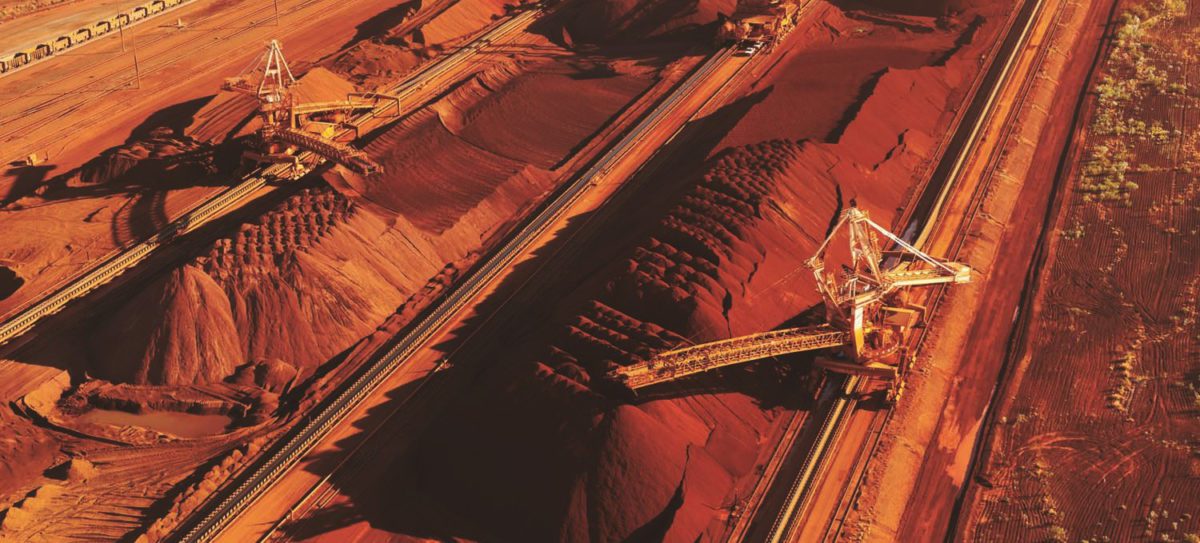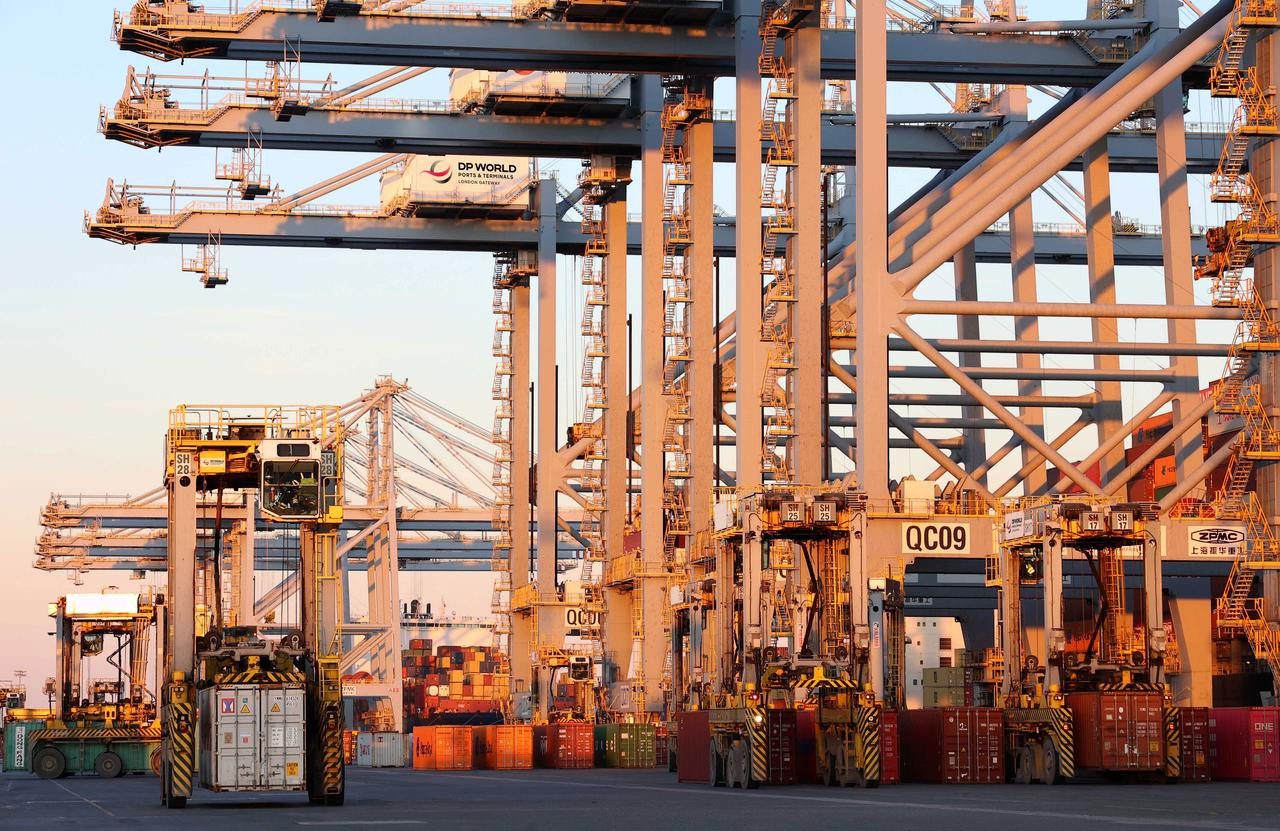Image courtesy BHP Billiton
(Bloomberg) — The cheapest iron ore in 31 months and the lowest shipping costs on record are poised to increase the number of cargoes going to China, curbing losses for vessel owners enduring a seven-month run of unprofitable rates.
Capesizes, each hauling about 160,000 metric tons of cargo, will earn an average of $14,000 a day in the fourth quarter, the most in a year, the median of six analyst estimates compiled by Bloomberg shows. While that’s more than the $10,500 anticipated by forward freight agreements, handled by brokers and used to bet on future transport costs, it’s still less than the $16,700 owners need to break even.
The 34 percent slump in iron-ore prices in the past year means some Chinese mines will start curbing output, according to Morgan Stanley, the U.S. bank that ships the most commodities. Declining domestic supply will spur the nation’s mills, making about 46 percent of the world’s steel, to import more of the raw material, the biggest source of cargoes for Capesizes.
“There will be a time when Chinese traders will come back to buy iron ore,” said Philippe Van Den Abeele, the London- based managing director of Castalia Fund Management (U.K.) Ltd., an adviser to a hedge fund trading freight derivatives. “The market is bad and there are too many ships, but we should have support in commodity demand and a pick-up in rates. We believe the fourth quarter will be busy.”
Capacity Glut
Capesize earnings plunged 82 percent to $4,417 since the start of January because of a capacity glut, according to Baltic Exchange data. Daily rates averaged $6,384, the lowest since at least 2000, according to the London-based bourse, whose data are used as benchmarks for about 75 percent of commodity cargoes.
Iron ore at the Chinese port of Tianjin last traded at $116.60 a so-called dry ton and reached $115.20 on July 30, the lowest price since December 2009, according to the Steel Index Ltd., a unit of the McGraw-Hill Cos. Chinese mines start cutting output when prices drop to $130 or less, Morgan Stanley estimates.
When prices tumbled to $116.90 in October last year, Chinese imports jumped 29 percent the following month, customs data show. Capesize rates averaged $28,557 in the fourth quarter, 67 percent more than in the previous three months.
China, which buys about 65 percent of all seaborne iron-ore cargoes, has imported more in the second half than in the first six months of every year but one in the past two decades, data compiled by Bloomberg show. Traders stockpile ore in the fourth quarter because freezing weather disrupts ports in the following three months, said Steve Rodley, London-based managing director of Global Maritime Investments Ltd., which operates 64 ships.
Stockpiled Ore
Stockpiles at Chinese ports are already near their highest level in at least two years, according to data from Shanghai Steelhome Information, a research company based in the city. The inventories of 99.4 million tons are equal to about 14 percent of the nation’s annual imports estimated by London-based Clarkson Plc, the world’s largest shipbroker.
Mills may also need less ore after growth in the third- largest economy slowed for six quarters. Domestic prices for benchmark hot-rolled coil steel, used for construction and pipes, fell 14 percent to 3,615 renminbi ($567) a ton this year, according to Metal Bulletin Plc. Output exceeded 60 million tons every month since March, when it was at the highest ever, data from the Brussels-based World Steel Association show.
When steel prices fell 14 percent in September and October, mills cut output for three consecutive months, data compiled by Bloomberg show.
Fewer Cargoes
Fewer ore cargoes would exacerbate the glut in shipping. The Capesize fleet expanded 91 percent since 2008, when daily rates as high as $233,988 spurred owners to order new vessels, Clarkson data show. Outstanding contracts at ship yards are still equal to 20 percent of existing capacity, according to IHS Inc., an Englewood, Colorado-based research company. The fleet will grow another 14 percent this year as the number of cargoes advances 4 percent, Clarkson estimates.
The glut extends to most types of shipping. The Baltic Dry Index, reflecting costs across Capesizes and three other vessel classes, declined 52 percent this year. Rates for very large crude carriers, hauling about 2 million barrels of oil, dropped 70 percent, according to Clarkson. An index reflecting charges for six types of containers fell 36 percent in the past year, a gauge from the Hamburg Shipbrokers’ Association shows.
Cie. Maritime Belge SA, whose Capesizes account for 82 percent of its fleet capacity, will post a 16 percent decline in net income to 78.97 million euros ($97.8 million) this year, according to the mean of three analyst estimates compiled by Bloomberg. Shares of the Antwerp, Belgium-based company are little changed this year and will rise 11 percent to 19 euros in 12 months, according to the average of three predictions.
Iron Content
“You could see some pretty significant growth rates in imported ore,” John Wobensmith, the chief financial officer of Genco Shipping & Trading Ltd., a New York-based owner of nine Capesizes, told analysts on a conference call Aug. 2. “You’re going to see imported ore displace Chinese ore more and more.”
China’s ore is about 20 percent iron, compared with more than 55 percent in Australia, making it more expensive to extract, Deutsche Bank AG estimates.
Ore prices have to stay under $130 for several weeks before Chinese mines shut down, according to Carlos de Alba, an analyst at Morgan Stanley in New York. They declined below that level on July 17. Production costs in China are about $140 a ton, based on the iron content of the ore, Credit Suisse Group AG analysts led by Andrew Shaw in Singapore said in a July 11 report.
Steel Mills
Iron ore is the second-largest seaborne commodity after crude oil, Clarkson data show. It accounted for 66 percent of single-voyage charters for Capesizes in the past 12 months, according to Fotis Giannakoulis, an analyst at Morgan Stanley in New York. Chinese imports will expand 6.1 percent to 728.9 million tons this year as domestic output shrinks 20 percent to 329 million tons, Credit Suisse estimates.
“We’ve seen before that when the prices come down to this level and remain at this level, it becomes very hard for domestic iron ore producers in China to maintain production,” said Erik Nikolai Stavseth, an analyst at Arctic Securities ASA in Oslo whose recommendations on the shares of shipping companies returned 29 percent in the past year. “There is potentially going to be more interest for iron-ore imports.”
– Isaac Arnsdorf and Michelle Wiese Bockmann, Copyright 2012 Bloomberg

 Join The Club
Join The Club











